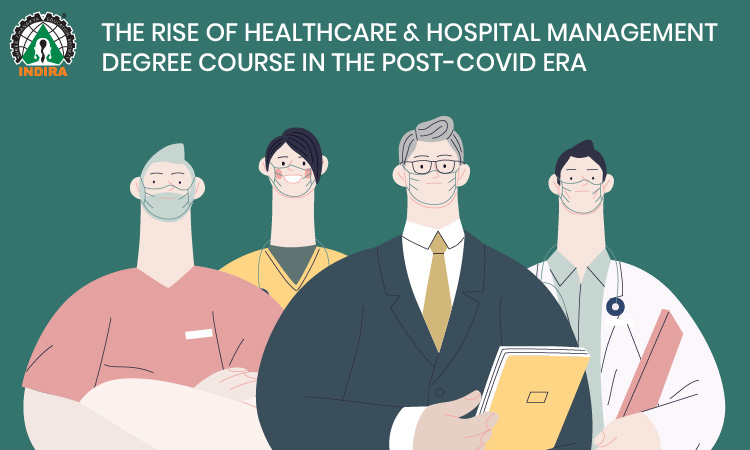Criterion 1
Curricular Aspects
1.1.1: The Institution ensures effective curriculum planning and delivery through a well-planned and documented process including Academic calendar and conduct of continuous internal Assessment
1.2.1 Number of Add on /Certificate/Value added programs offered during the last five years
1.2.2: Percentage of students enrolled in Certificate/ Add-on/Value added programs as against the total number of students during the last five years
1.3.1: Institution integrates crosscutting issues relevant to Professional Ethics, Gender, Human Values, Environment and Sustainability into the Curriculum
1.3.2: Percentage of students undertaking project work/field work/ internships (Data for the latest completed academic year)
1.4.1: Feedback Analysis and Action Taken Report.
Criterion 2
Teaching- Learning and Evaluation
2.1.1 Enrollment percentage
2.1.2: Percentage of seats filled against seats reserved for SC, ST, OBC, Divyangjan, etc.
2.3.1: Student Centric Methods & ICT tools
2.5.1: Mechanism of internal/ external assessment & grievance redressal system
2.6.1: COs & POs Attainment & Evaluation
Criterion 3
Research, Innovations and Extension.
3.1.1 Grants received from Government and nongovernmental agencies for research projects / endowments in the institution during the last five years (INR in Lakhs)
3.2.1 Innovation Ecosystem
3.2.2 Guest lectures
3.3.1 Research Publications
3.3.2 Book Chapters and Conference Papers
3.4.1 Impact of Extension Activities Additional Information
3.4.2 Awards and recognition received for extension activities from government/ government recognised bodies.
3.4.3 Extension Activities Additional Information
3.5.1 The number of MoUs, collaborations/linkages for Faculty exchange, Student exchange, Internship, Field trip, On-the-job training, research and other academic activities during the last five years
Criterion 4
Infrastructure and Learning Resources
4.1.1 Availability of adequate infrastructure and physical facilities
4.1.2 Percentage of expenditure, excluding salary for infrastructure augmentation during last five years (INR in Lakhs)
4.2.1 Library as learning resource.
4.3.1: Institution frequently updates its IT facilities and provides sufficient bandwidth for internet connection
4.3.2: Student – Computer ratio (Data for the latest completed academic year)
4.4.1: Percentage of expenditure incurred on maintenance of infrastructure (physical and academic support facilities) excluding salary component during the last five years (INR in Lakhs)
Criterion 5
Student Support and Progression
5.1.1 Percentage of students benefited by scholarships and free ships provided by the Government and Non-Government agencies
5.1.2 Capacity building and skills enhancement initiatives taken by the institution
5.1.3 Percentage of students benefitted by guidance for competitive examinations and career counselling offered by the institution during the last five yearsexaminations, etc.)
5.1.4 -The institute has a transparent mechanism for timely redressal of student grievances including sexual harassment and ragging cases
5.2.1 Percentage of placement of outgoing students and students progressing to higher education during the last five years.
5.2.2: Number of students Qualifying in state/national/international level examinations during the year (e.g. JAM/GATE/ CLAT/GMAT/CAT/GRE/ TOEFL/ Civil Services/State government
5.3.1: Number of awards/medals for outstanding performance in sports/cultural activities at University/state/national / international level
5.3.2: Average number of sports and cultural programs in which students of the Institution participated during last five years
5.4.1 There is a registered Alumni Association that contributes significantly to the development of the institution through financial and/or other support services
Criterion 6
Governance, Leadership and Management.
6.1.1 The governance and leadership is in accordance with vision and mission of the institution and it is visible in various institutional practices such as decentralization and participation in the institutional governance.
6.2.1 Strategy Development and Deployment
6.2.2 Implementation of e-governance in areas of operation
6.3.1 Faculty Empowerment Strategies
6.3.2 Percentage of teachers provided with financial support to attend conferences/ workshops and towards membership fee of professional bodies during last five years.
6.3.3 Percentage of teaching and non-teaching staff participating in Faculty development Programmes (FDP), professional development /administrative training programs during the last five years
6.4.1 Institution has strategies for mobilization and optimal utilization of resources and funds from various sources (government/ nongovernment organizations) and it conducts financial audits regularly (internal and external)
6.5.2 The institution reviews its teaching learning process, structures & methodologies of operations and learning outcomes at periodic intervals through IQAC set up as per norms and recorded the incremental improvement in various activities
Criterion 7
Institutional Values and Best Practices
7.1.1 Gender Equity and celebration of days of National/International commemoration.
7.1.2 Environmental Consciousness and Sustainability and Divyangian Friendly Initiatives
7.1.3 Quality audits on environment and energy regularly undertaken by the institution.
7.1.4 Institutionalefforts/initiatives in providing an inclusive environment
Best Practices
Best Practices - 1
Best Practices - 2
2020-21
2019-20
2018-19
2017-18
2016-17
2020-21
2019-20
2018-19
2017-18
2016-17
1.1 Number of student’s year wise during the last five years
2.1 Number of teaching staff / full time teachers during the last five years (Without repeat count)
2.2 Number of teaching staff / full time teacher’s year wise during the last five years
3.1 Expenditure excluding salary component year wise during the last five years
1.3.2. DVV Response: Percentage of students undertaking project work/field work/ internships (Data for the latest completed academic year)
1.4.1. DVV Response: Institution obtains feedback on the academic performance and ambience of the institution from various stakeholders, such as Students, Teachers, Employers, Alumni etc. and action taken report on the feedback is made available on institutional website (Yes or No)
2.1.1 DVV Response: Enrollment percentage
2.1.2 DVV Response: Percentage of seats filled against seats reserved for various categories (SC, ST, OBC, Divyangjan, etc. as per applicable reservation policy during the last five years (Exclusive of supernumerary seats)
3.3.1 DVV Response: Number of research papers published per teacher in the Journals notified on UGC care list during the last five years
3.3.2 DVV Response: 3.3.2 Number of books and chapters in edited volumes/books published and papers published in national/ international conference proceedings per teacher during last five year
3.4.3 DVV Response: Number of extension and outreach programs conducted by the institution through NSS/NCC/Red cross/YRC etc., (including the programs such as Swachh Bharat, AIDS awareness, Gender issues etc. and/or those organised in collaboration with industry, community, and NGOs) during the last five years.
3.5.1 DVV Response: The number of MoUs, collaborations/linkages for Faculty exchange, Student exchange, Internship, Field trip, On-the-job training, research and other academic activities during the last five years.
4.1.2.1. DVV Response:Expenditure for infrastructure augmentation, excluding salary during the last five years (INR in lakhs)
4.3.2.1. DVV Response: Number of computers available for students usage during the latest completed academic year
4.4.1.1 DVV Response: Expenditure incurred on maintenance of infrastructure (physical facilities and academic support facilities) excluding salary component year wise during the last five years (INR in lakhs)
5.1.2. DVV Response: Capacity building and skills enhancement initiatives taken by the institution include the following:
5.1.4 DVV Response: The Institution has a transparent mechanism for timely redressal of student grievances including sexual harassment and ragging cases
5.3.1 DVV Response: Number of awards/medals for outstanding performance in sports/cultural activities at University/state/national / international level
5.3.2 DVV Response: 5.3.2 - Average number of sports and cultural programs in which students of the Institution participated during last five years
6.2.2. DVV Response: Implementation of e-governance in areas of operation.
6.3.2. DVV Response: percentage of teachers provided with financial support to attend conferences/ workshops and towards membership fee of professional bodies during last five years.
6.3.3.1. DVV Response: Total number of teaching and non-teaching staff participating in Faculty development Programmes (FDP), professional development /administrative training programs during the last five years
6.5.2 DVV Response: The institution reviews its teaching learning process, structures & methodologies of operations and learning outcomes at periodic intervals through IQAC set up as per norms and recorded the incremental improvement in various activities
Criterion 1
Curricular Aspects
1.1.1: The Institution ensures effective curriculum planning and delivery through a well-planned and documented process including Academic calendar and conduct of continuous internal Assessment
1.2.1 Number of Add on /Certificate/Value added programs offered during the last five years
1.2.2: Percentage of students enrolled in Certificate/ Add-on/Value added programs as against the total number of students during the last five years
1.3.1: Institution integrates crosscutting issues relevant to Professional Ethics, Gender, Human Values, Environment and Sustainability into the Curriculum
1.3.2: Percentage of students undertaking project work/field work/ internships (Data for the latest completed academic year)
1.4.1: Feedback Analysis and Action Taken Report.
Criterion 2
Teaching- Learning and Evaluation
2.1.1 Enrollment percentage
2.1.2: Percentage of seats filled against seats reserved for SC, ST, OBC, Divyangjan, etc.
2.3.1: Student Centric Methods & ICT tools
2.5.1: Mechanism of internal/ external assessment & grievance redressal system
2.6.1: COs & POs Attainment & Evaluation
Criterion 3
Research, Innovations and Extension.
3.1.1 Grants received from Government and nongovernmental agencies for research projects / endowments in the institution during the last five years (INR in Lakhs)
3.2.1 Innovation Ecosystem
3.2.2 guest lectures
3.3.1 Research Publications
3.3.2 Book Chapters and conference papers
3.4.1 Impact of Extension Activities Additional Information
3.4.2 Awards and recognition received for extension activities from government/ government recognised bodies.
3.4.3 Extension Activities Additional Information
Criterion 4
Infrastructure and Learning Resources
4.1.1 Availability of adequate infrastructure and physical facilities
4.1.2 Percentage of expenditure, excluding salary for infrastructure augmentation during last five years (INR in Lakhs)
4.2.1 Library as learning resource.
4.3.1: Institution frequently updates its IT facilities and provides sufficient bandwidth for internet connection
4.3.2: Student – Computer ratio (Data for the latest completed academic year)
4.4.1: Percentage of expenditure incurred on maintenance of infrastructure (physical and academic support facilities) excluding salary component during the last five years (INR in Lakhs)
Criterion 5
Student Support and Progression
5.1.1 Percentage of students benefited by scholarships and free ships provided by the Government and Non-Government agencies
5.1.2 Capacity building and skills enhancement initiatives taken by the institution
5.1.3 Percentage of students benefitted by guidance for competitive examinations and career counselling offered by the institution during the last five yearsexaminations, etc.)
5.1.4 -The institute has a transparent mechanism for timely redressal of student grievances including sexual harassment and ragging cases
5.2.1 Percentage of placement of outgoing students and students progressing to higher education during the last five years.
5.2.2: Number of students Qualifying in state/national/international level examinations during the year (e.g. JAM/GATE/ CLAT/GMAT/CAT/GRE/ TOEFL/ Civil Services/State government
5.3.1: Number of awards/medals for outstanding performance in sports/cultural activities at University/state/national / international level
5.3.2: Average number of sports and cultural programs in which students of the Institution participated during last five years
5.4.1 There is a registered Alumni Association that contributes significantly to the development of the institution through financial and/or other support services
Criterion 6
Governance, Leadership and Management.
6.1.1 The governance and leadership is in accordance with vision and mission of the institution and it is visible in various institutional practices such as decentralization and participation in the institutional governance.
6.2.1 Strategy Development and Deployment
6.2.2 Implementation of e-governance in areas of operation
6.3.1 Faculty Empowerment Strategies
6.3.2 Percentage of teachers provided with financial support to attend conferences/ workshops and towards membership fee of professional bodies during last five years.
6.3.3 Percentage of teaching and non-teaching staff participating in Faculty development Programmes (FDP), professional development /administrative training programs during the last five years
6.4.1 Institution has strategies for mobilization and
optimal utilization of resources and funds
from various sources (government/
nongovernment organizations) and it
conducts financial audits regularly (internal
6.5.2 The institution reviews its teaching learning process,
structures & methodologies of operations and learning
outcomes at periodic intervals through IQAC set up as per
norms and recorded the incremental improvement in various
activities
Criterion 7
Institutional Values and Best Practices
7.1.1 Gender Equity and celebration of days of National/International commemoration.
7.1.2 Environmental Consciousness and Sustainability and Divyangian Friendly Initiatives
7.1.3 Quality audits on environment and energy regularly undertaken by the institution.
7.1.4 Institutionalefforts/initiatives in providing an inclusive environment
Best Practices
Best Practices - 1
Best Practices - 2
1.1 Number of student’s year wise during the last five years
2.1 Number of teaching staff / full time teachers during the last five years (Without repeat count)
2.2 Number of teaching staff / full time teacher’s year wise during the last five years
3.1 Expenditure excluding salary component year wise during the last five years
1.3.2. Percentage of students undertaking project work/field work/ internships (Data for the latest completed academic year)
1.4.1. Institution obtains feedback on the academic performance and ambience of the institution from various stakeholders, such as Students, Teachers, Employers, Alumni etc. and action taken report on the feedback is made available on institutional website (Yes or No)
2.1.1 Enrollment percentage
2.1.2 Percentage of seats filled against seats reserved for various categories (SC, ST, OBC, Divyangjan, etc. as per applicable reservation policy during the last five years (Exclusive of supernumerary seats)
3.3.1 DVV Response: Number of research papers published per teacher in the Journals notified on UGC care list during the last five years
3.3.2 DVV Response: 3.3.2 Number of books and chapters in edited volumes/books published and papers published in national/ international conference proceedings per teacher during last five year
3.4.3 DVV Response: Number of extension and outreach programs conducted by the institution through NSS/NCC/Red cross/YRC etc., (including the programs such as Swachh Bharat, AIDS awareness, Gender issues etc. and/or those organised in collaboration with industry, community, and NGOs) during the last five years.
3.5.1 The number of MoUs, collaborations/linkages for Faculty exchange, Student exchange, Internship, Field trip, On-the-job training, research and other academic activities during the last five years.
4.1.2.1. DVV Response: Expenditure for infrastructure augmentation, excluding salary during the last five years (INR in lakhs)
4.3.2.1. Number of computers available for students usage during the latest completed academic year
4.4.1.1 Expenditure incurred on maintenance of infrastructure (physical facilities and academic support facilities) excluding salary component year wise during the last five years (INR in lakhs)
5.1.2. Capacity building and skills enhancement initiatives taken by the institution include the following:
5.1.4 The Institution has a transparent mechanism for timely redressal of student grievances including sexual harassment and ragging cases
5.3.1 - Number of awards/medals for outstanding performance in sports/cultural activities at University/state/national / international level
5.3.2 - Average number of sports and cultural programs in which students of the Institution participated during last five years
6.2.2. DVV Response: Implementation of e-governance in areas of operation.
6.3.2. - DVV Response - percentage of teachers provided with financial support to attend conferences/ workshops and towards membership fee of professional bodies during last five years.
6.3.3.1. - DVV Response: Total number of teaching and non-teaching staff participating in Faculty development Programmes (FDP), professional development /administrative training programs during the last five years
6.5.2 - The institution reviews its teaching learning process, structures & methodologies of operations and learning outcomes at periodic intervals through IQAC set up as per norms and recorded the incremental improvement in various activities

The Rise of Healthcare & Hospital Management Degree Course in the Post-COVID Era
Published on June 24, 2021

What after 12th? Choose a career in Healthcare – Full Guide to Building a Career in Healthcare and Hospital Management
Published on July 8, 2021

Healthcare Management: An Emerging Career Option
Published on September 17, 2020

HEALTH AND FITNESS FOR BUSY PEOPLE
Published on November 21, 2018